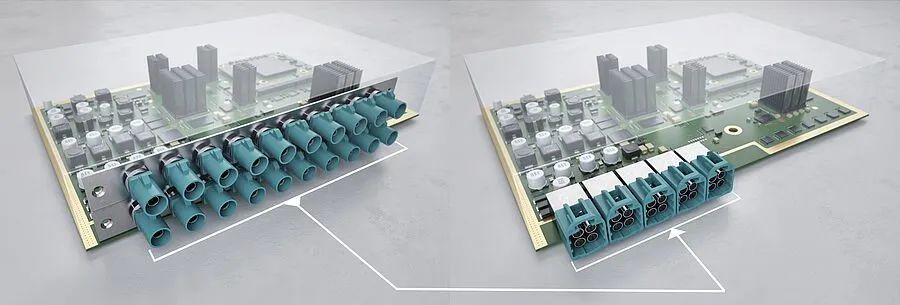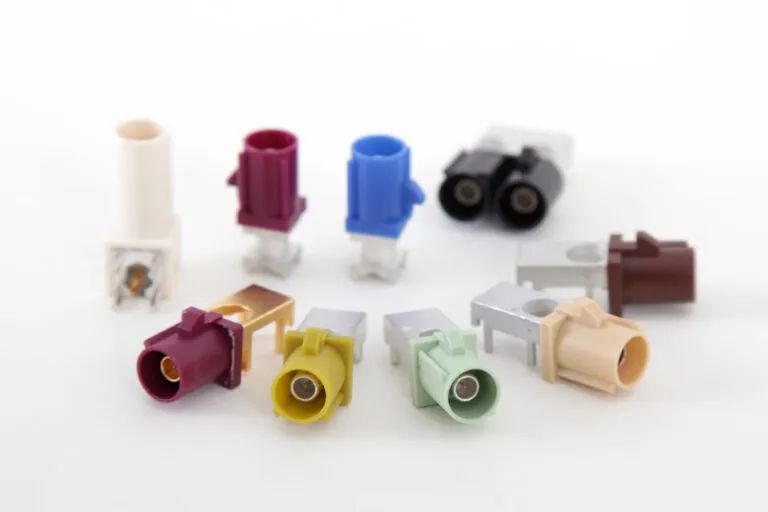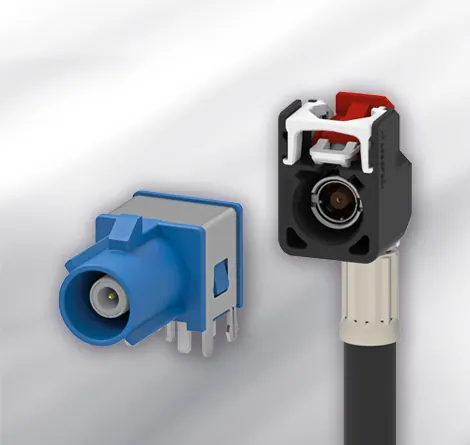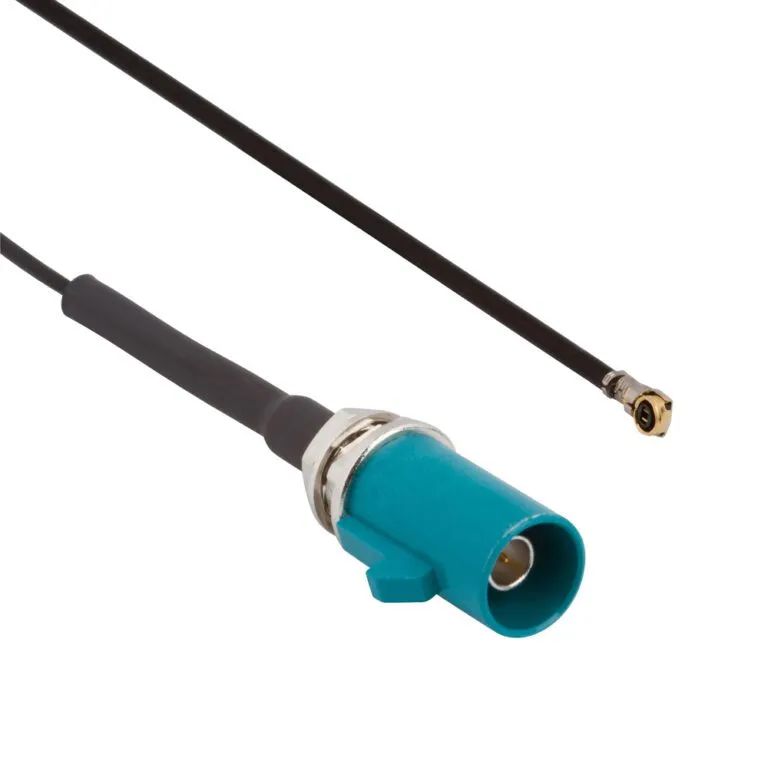Mini-FAKRA connectors are a scaled down version of the popular FAKRA connectors and are used in automobiles as well as Personal Electric Vehicles (PEVs) and Light Electric Vehicles (LEVs) due to their small size and light weight, which is especially important in electric vehicle applications.

Mini FAKRA: High-speed Mini-FAKRA (HFM) connectors are 80% smaller than FAKRA connectors. (HFM is a registered trademark of Rosenberger). These miniature coaxial connectors are used in many automotive applications including surround view cameras, GPS navigation, autonomous driving, driver assistance systems, high bandwidth infotainment and computing models. Available in straight or right angle versions, they are rugged, lightweight and small in size. They offer data rates up to 28 Gb/s. Type A mini-FAKRA connectors support data transfer up to 20 Gb/s.

The FAKRA connector, a mainstay of automotive connectivity for the past two decades, is a version of the Subminiature Type B (SMB) coaxial RF connector developed by Rosenberger and standardized by the German Automobile Manufacturers' Council (DAMC).FAKRA is an acronym for Fachkreis Automobile or Working Group Automobile. FAKRA is an acronym for Fachkreis Automobile or Working Group Automobile. These multifunctional connectors are widely used in the global automotive industry, primarily for telematics, security and communication applications. An average connected car contains at least 15 FAKRA connectors.

The FAKRA standard defines the interface as well as the mechanical and electrical characteristics of the connector. a FAKRA connector consists of a plug and a socket, which are mated by means of a push-fit mechanism embedded in a plastic housing. An audible locking confirmation lets the operator know that a connection has been established. Some variants include auxiliary locks. They are available in 14 different mechanical layouts. Color coding facilitates identification and prevents mismatches.FAKRA connectors operate at frequencies up to 6 GHz.

FAKRA connectors are used throughout the vehicle for applications such as telematics and GPS navigation, entertainment systems, Bluetooth, cellular, keyless entry, climate control and radio antennas. They are also used in sensor systems for autonomous control. Other non-automotive applications include outdoor routers, industrial process control boxes, machine-to-machine modules and IoT devices.
There are several subtypes of FAKRA connectors: the original FAKRA I connectors are now primarily used in antenna applications. FAKRA II is the second generation of FAKRA and is considered the current basic standard. They are available in a variety of angles and configurations, including IP6K9K sealed and weatherproof versions for outdoor applications. Customized and miniaturized versions are available from some manufacturers.
Mini-FAKRA connector design instructions:
Standardized The FAKRA standard is accepted by major automotive manufacturers and system suppliers worldwide for automotive communications and entertainment applications.FAKRA products comply with ISO 20860-1 and 2, DIN ISO 20860, SAE/USCAR 18 standards.
Configurations FAKRA includes a complete line of application-based configurations with a variety of entry angles, color coding, mechanical keying, and cable name options.
Durability Rugged plastic housings help protect FAKRA connectors from the harsh conditions vehicles face in operation, including debris, weather conditions, shock and vibration. They are designed to handle a temperature range of -40°C to +105°C. Sealed versions are available.
Number of insertions and withdrawals These connectors are designed to handle a minimum of 100 insertions and withdrawals.
Performance FAKRA connectors are designed to perform at operating frequencies up to 6 GHz and can handle 335 volts RMS continuously.
Assembly To meet the demands of automated assembly, FAKRA connectors are optimized for tape and reel packaging. They are also suitable for selective, wave and reflow processing.
Markets, Industries, Applications
FAKRA connectors are used in telematics, safety and communication applications in the automotive industry as well as in non-automotive vehicles such as boats, motorcycles and off-highway heavy equipment. They are used for safety, driver assistance, V2V and other in-vehicle networks.
Tags :